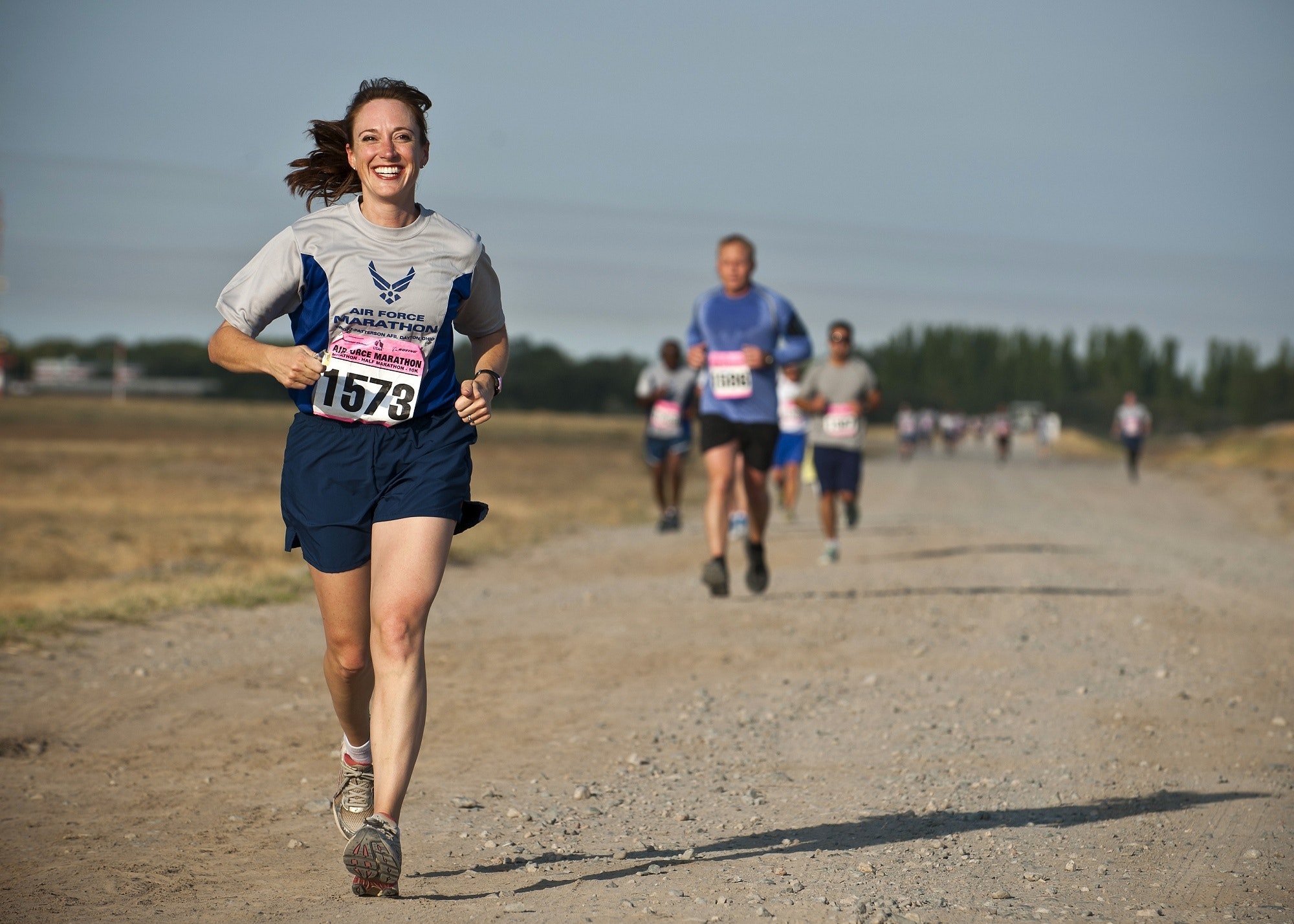“Preliminary exercise to get the leg muscles ready for the harder pressure the Hundred Up exercise will put them through.
On the ground, mark two parallel lines eight inches apart and 18 inches apart.
Set foot in the center of each line. You are standing with your feet exactly straight and flat on the ropes. The torso should posture upright and straightforward, the arms held lightly and nearly straight with a slight forward tilt.
Now, elevate one knee to hip height, precisely as you would when walking, except the knee action is higher. Then, bring the foot back to its previous position, softly tapping the line with the ball of the foot. Repeat this process ten to thirty times with the other leg.
This is equivalent to standing on one leg while exercising the other. It is essential to watch that the knee always reaches the same level as the hip. Although it might not seem simple initially, practice will produce the desired outcome quickly.
When exercising, special attention must be paid to maintaining a straight back, legs, and feet. Practice slowly until you have the required balance and quickly complete the exercise. If not, the Hundred Up will be deemed inadequate.
After thoroughly mastering the proper form, the pupil can concentrate on the following:
The main exercise, or Hundred Up
Prepare the lines as if for a practice run. Similar to how you would typically stand on them, but with the body balanced on the ball of the foot, heels elevated, a slight forward tilt to the head and body, and hands by the sides.
As in the slower exercise, spring from the toe, bringing the knee to hip level while letting the foot return to its starting position.
Continue raising and lowering the legs alternately by doing the same with the other leg.
The only difference between this action and running is that the foot drops back to its initial position on the ground.
The key idea to keep in mind is appropriate behavior. At every step, the knees must be raised to hip level, and as the knee lowers, the foot should be carried further back and story with the backs.
The body is flung out of its perpendicular when the knee is raised above the hip, and the opposite is true when the foot is thrown back beyond the level of the back, forcing the body forward in proportion. Both are obstacles to the form and tempo that individuals who train aim to achieve, whether for health or competition. These will unquestionably gain more from performing their practice properly than the opposite.
Use your arms like you would when running when performing the Hundred Up. Hold them practically at full length and swing them a few inches behind your back as you take each step.
To loosen the shoulders and make the upper part of the frame active and malleable so that it can function in perfect harmony with the legs when the Hundred Up is performed, a good exercise is to stand stationary on the lines and utilize the arms as in the running, putting plenty of force into the task.
Of course, this is just a starting position and a proper movement for running, but it is still beneficial for the athlete to learn this first since it stops the legs from going in unwanted directions. It imparts a general habit of being straightforward and direct.
After learning it for moving forward straight ahead, you should know it for moving sideways while also making movements to your right and left. Because it sometimes makes more sense to go the rear and then the roundabout route rather than the direct route in life or athletics, rather than walking precisely straight forward without turning to the side.


